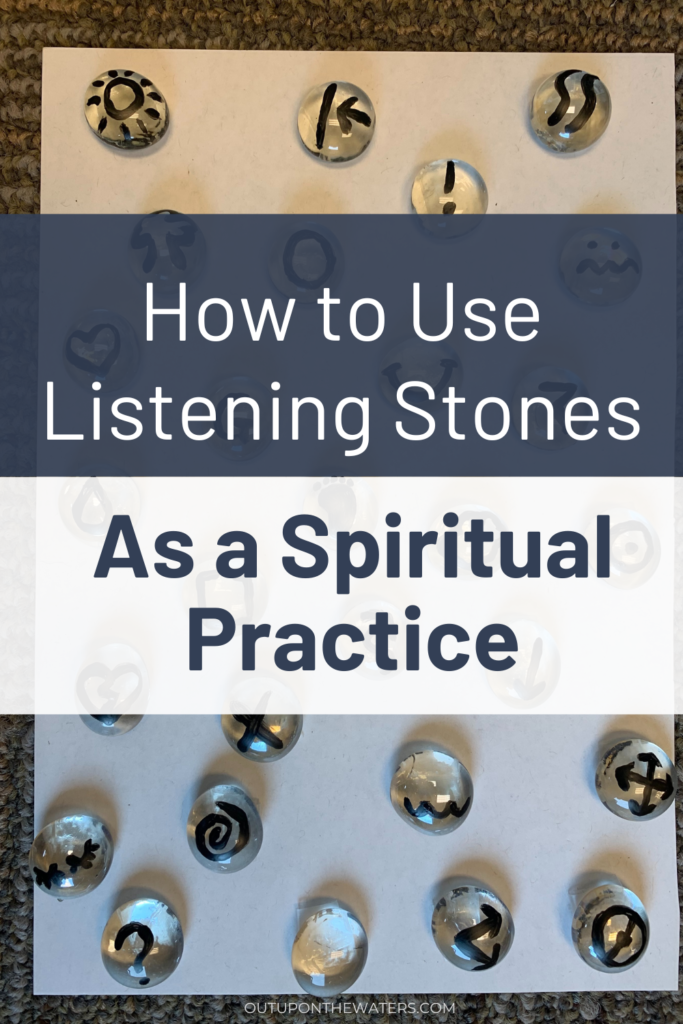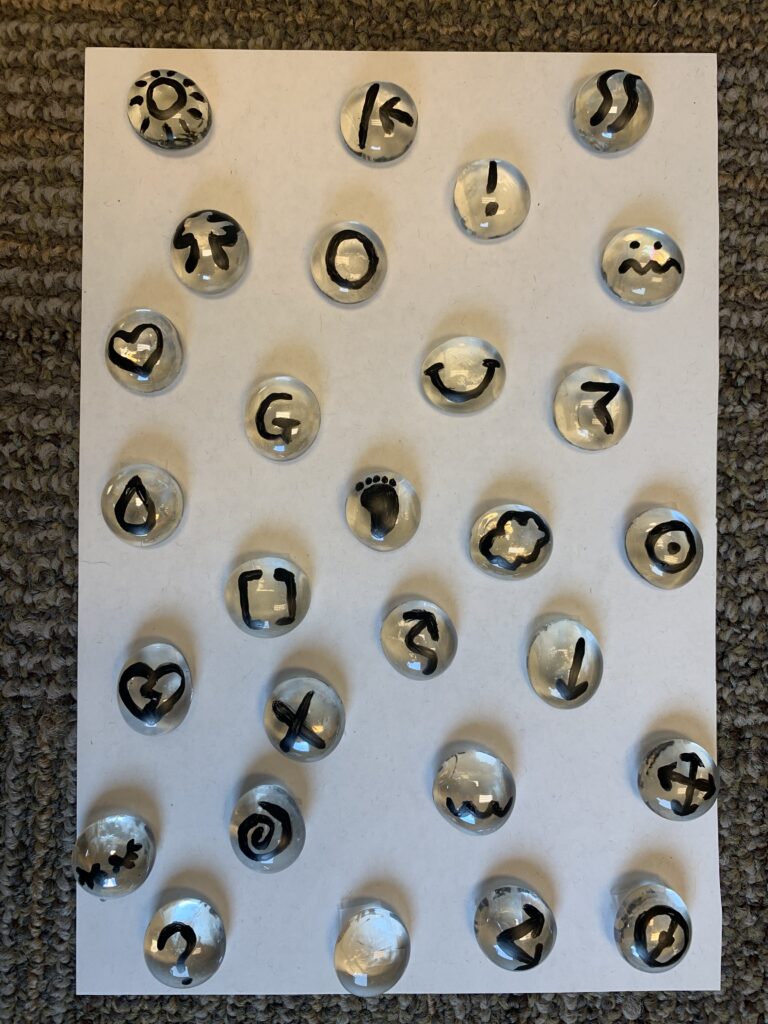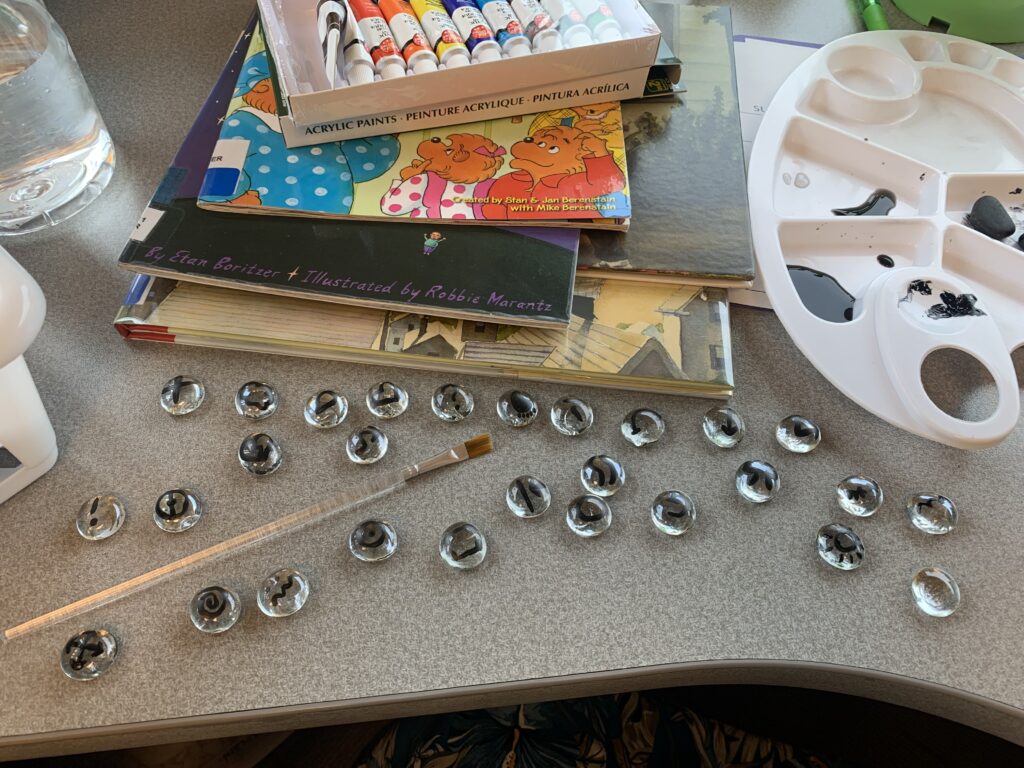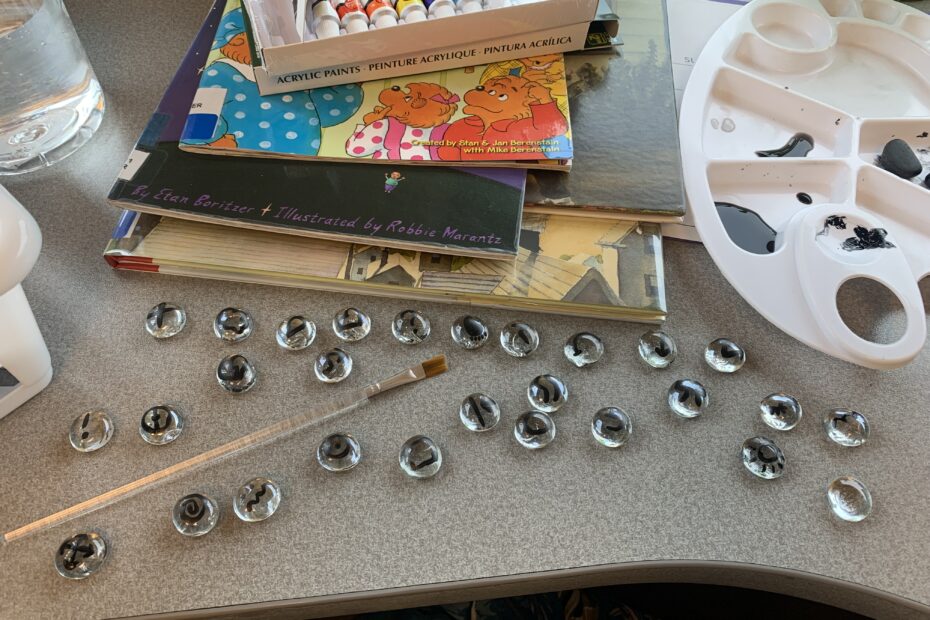I use listening stones as part of my prayer practice with the kids that I work with. Listening stones are a simple and helpful tool to encourage children to process and share their thoughts, feelings, and insights. You can use listening stones as a reflective activity with children of all ages, and even with youth and adults, and also as a spiritual practice.
[Disclaimer: This post contains affiliate links. Using these links means I may earn a percentage of the purchase at no extra cost to you. As an amazon associate, I receive a percentage of qualifying purchases. View our disclosure policy here.]

What are Holy Listening Stones?
Holy Listening Stones are a resource developed by Rev. Dr. Leanne Hadley.
Listening stones are a tool to help children put their thoughts, feelings, and insights into words. They are small stones with open-ended symbols that can have several meanings and that leave the interpretation up to the child. There is no “correct” meaning for any stone; what the person interprets the stone to mean is what it means for them. Listening stones are an excellent tool to create space for children to process emotions and put them into words, and to remind adults to slow down and really listen.
Listening stones can be used with children, youth, or adults. They are especially helpful to use with children, because children primarily use drawings, pictures and symbols to express themselves. Listening stones can be helpful with all ages because they offer open ended symbols that can help to express complex emotions.

How to Use Listening Stones
Listening stones can be used with children, youth, and adults to help guide and deepen conversation, and to share complex emotions. This practice can be done one-on-one or in a small group setting. This is a great practice for families at home, for Sunday school, youth group, and other church settings, for small group Bible study and for prayer groups.
You can use listening stones as a spiritual practice by intentionally creating space for deeper conversations and by praying for each person who shares and for each blessing, struggle, challenge, loss, etc. shared.
Here are some suggestions about how to use your listening stones.
- Choose a time and a place to use your listening stones.
- Clear a space and lay out the listening stones. Explain that each stone has a symbol that can be interpreted to mean different things. There is no one “right” meaning. What the person interprets the stone to mean is what it means to them at that moment.
- Invite each child (or youth or adult) to choose a stone (or stones) that represent how they feel that day, how their day went, or which stone speaks to them (which stone they feel drawn to) at that moment. Invite them to share why they picked that stone.
- Listening attentively to the person sharing. Don’t focus on composing your answer or thinking about what you are going to say. Try to listen without judgement or evaluation. You can affirm what the person is sharing and let them know their feelings are valid. When they share something painful, you can say things like, “I can see you are hurt” or “that must be very hard”. You can use nods and eye contact, and you can ask clarifying questions. Avoid saying things like “it will be ok” or “I know how you feel.”
- If you use listening stones in a religious setting, you can close with a prayer, thanking God for the good things shared, asking for support around the hard things shared, and asking God to guide the person sharing and keep them in his loving care.
The listener’s goal is to truly listen and to validate that there are no wrong feelings. The listener should not try to fix problems, offer solutions, or give examples of when they went through something similar.
How to Use Listening Stones as a Spiritual Practice
This activity can easily be turned into a spiritual practice (in fact, it is inherently something of a spiritual practice).
- Have a dedicated space set aside. This could be as simple as a spot on the carpet, or a cleared living room or dining room table. Have a special place for your listening stones when they are not in use (a dedicated space on a shelf, for example, or a special basket or cloth bag).
- Optional: light a candle before you share about your day in order to give the space a special and sacred feeling.
- Optional: open in prayer by inviting God to be with you in this space. This can be as simple as saying, Dear God, please be with us as we share our thoughts and feelings. You tell us that whenever two or three are gathered in your name, that you are there among them. Help us to listen well as we share about our day. Remind us that you are their with us to guide us and protect us. Amen. If praying with just one other person: Dear God, you tell us that whenever two or three are gathered in your name, that you are there among them. Please be here with us two. Open our hearts and our ears so that we may hear what you want to speak to and through us. Amen.
- Have each individual pick a stone and share why they choose that particular stone.
- Close in prayer, lifting up any struggles, obstacles, challenges, and losses, and giving thanks for God’s blessings. Ask God’s blessing on the person (or each person) who has shared.
When and Where to Use Listening Stones
Listening stones can be used in a variety of settings. They can be used in religious and non-religious settings. While listening stones were originally developed as “Holy Listening Stones” intended to create a sacred and holy space and to invite God into that space with the child, they are also an excellent resource to use as a simply reflective activity.
Here are some ideas about when are where to use listening stones.
- As a check-in time for kids and youth. Ask them to pick a stone that represents how they are feeling today or how their day (or week) went.
- At dinner time with your family, to encourage your children to process their emotions and share about their day.
- At church (during Sunday School or youth group), at school as a check in with kids, or at home with your family.
- During small group Bible study or youth group.

How to Make Your Own Listening Stones
Supplies needed:
- stones (clear glass stones or small stones from the beach, etc.)
- black paint and paintbrush or permanent marker
- Mod Podge or other spray sealant
- bag or box to keep your listening stones in
I made our set of listening stones with clear glass stones bought from the dollar store, black paint, and a spray sealant. I keep our collection of listening stones on a piece of card stock with a small piece of tape on the back of each stone, to make it easy for the kids to see all the stones at once and to choose which one(s) represent how they are feeling that day.
